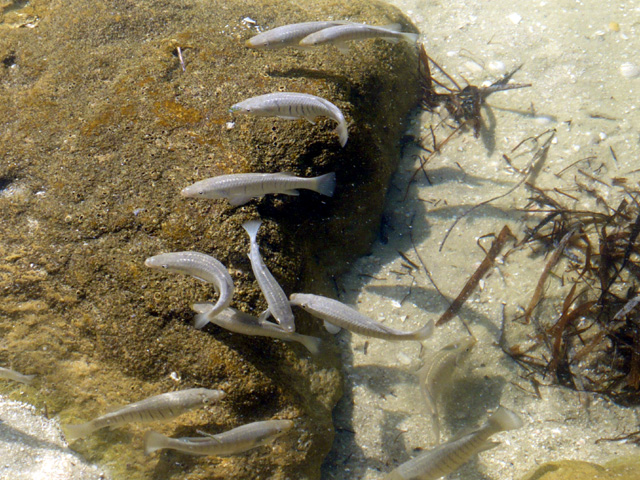Although my partner and I had a bumpy start we quickly readjusted and found our way across the water. The first mangroves we encountered were the reds with their prop roots exposed doing what they do best, stabilizing the trees. Nearby in the water we found the "live" seeds that they send off into the world to sprout and grow. These seeds can float in the ocean for up to a year until they find a resting place. These seeds as well as the adults, excludes the salt of the ocean with suberin.
Across the channel, we got some closer views of the other mangroves. Some birds could be found looking for food on the shallow edges of the mangroves. The area was very quiet and calm in between the mangrove islands. Fish were also seen jumping out of the water ! They were a surprise with each sudden "splash". I definitely look forward to kayaking here again soon and explore further down the channel.
Also I took some pictures, I got a group selfie with most of everyone :)
















































